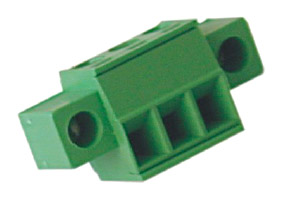Month: September 2015

Driving LEDs
Emanuele @ dev.emcelettronica.com published an article on how to drive LEDs: The LEDs (Light Emitting Diode) are diodes whose basic characteristic is the ability to emit light when they are passed through a current that flows from P to N region. At each recombination between the...
Continue Reading
Make a Weather Station With a Raspberry Pi 2
Jeremy Morgan @ jeremymorgan.com writes: Today I’m going to show you how to make sort of a mini weather station with a Raspberry Pi. This is an ongoing project of mine that I’ve been tinkering with so I’ll share my learnings with you. It started with a project I wrote about...
Continue Reading
PCB stencil jig
Gonazar’s PCB stencil jig: My solution to making a PCB stencil jig. I need this to do a run of ~30 small boards I got from DirtyPCB who also provided me with the stencil. However, I know that I’m going to be making more later with a new revision so I wanted a jig that I could...
Continue Reading
Can a current flow even up the hill?
Of course it can, even apeak. So if you connect leads from the bottom side via a PCB connector, you don´t have to worry about the current... Should you however be afraid of accidental fall off of the connector (it will certainly hold on if there are no vibrations, shocks or...
Continue Reading
High Speed Ecosystem Support and Calamity Monitoring System
The innovation of equipment for calamity detection and monitoring are quite rampant. It is because of consecutive aggression of storms and earthquakes in different parts of the world. As to observe the different scenarios, these are not merely natural causes, there are some or most of...
Continue Reading
18 PIN PIC Development Board
The PIC 18 PIN (DIP) Development / Evaluations Board demonstrates the capabilities of Microchip’s 8-bit microcontrollers, specifically, 18 Pin PIC16F1847. It can be used as a standalone demonstration board with a programmed part. With this board you can develop and prototype with...
Continue Reading
ESP8266 remote controlled sockets
Rui Santos published a new project, an ESP8266 remote controlled sockets: In this project your’re going to build a web server with an ESP8266 that can control remotely any sockets (safely!). ESP8266 remote controlled sockets -...
Continue Reading
Arduino – How to use a Force Sensitive Resistor
by codebender_cc @ instructables.com: In this tutorial you will learn how to use an FSR - Force Sensitive Resistor with Arduino to fade an LED. This sensor is a variable resistor just like a photocell or flex sensor. The resistance changes by applying pressure on it. Arduino - How...
Continue Reading











